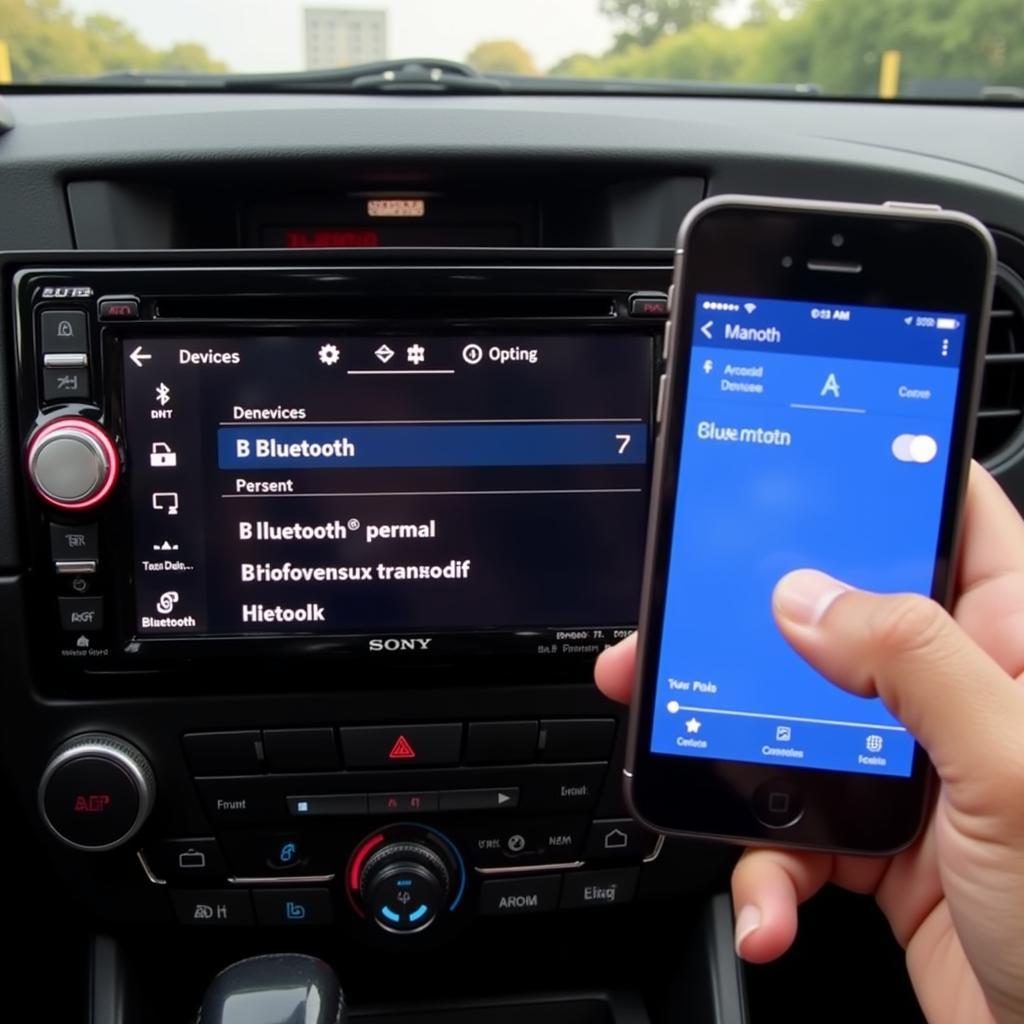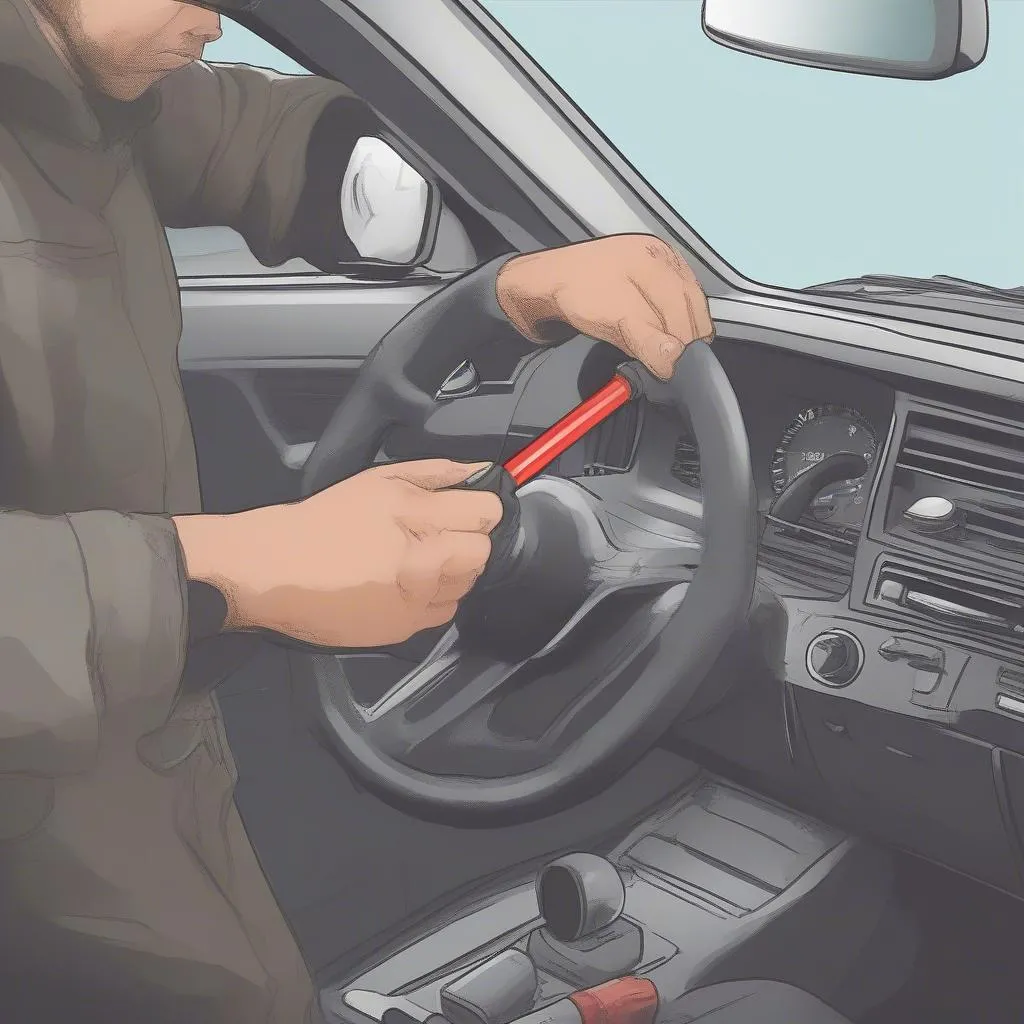The 2010 Ford Escape brake warning light can illuminate for several reasons, ranging from simple issues like a low brake fluid level to more complex problems involving the ABS system. Understanding why this light comes on is crucial for maintaining your vehicle’s safety and performance. This guide provides comprehensive information and troubleshooting steps to help you address the brake warning light issue in your 2010 Ford Escape.
If the brake warning light appears while you’re driving, it’s essential to pull over safely and assess the situation. Check your brake fluid level immediately. Sometimes, the issue can be as simple as needing a top-up. However, if the light persists after adding brake fluid, further investigation is needed. This could indicate a more serious problem, such as worn brake pads, a malfunctioning ABS sensor, or issues with the brake master cylinder.
Understanding Your Ford Escape’s Brake System
The braking system in your 2010 Ford Escape is a complex network of components working together to ensure safe and effective stopping power. These components include the brake pedal, master cylinder, brake lines, brake calipers, brake rotors, and brake pads, along with the anti-lock braking system (ABS). A problem with any of these components can trigger the brake warning light.
A common cause of the brake warning light is low brake fluid. The brake fluid level sensor detects when the fluid drops below a safe level, illuminating the warning light. However, a leak in the brake system can also cause the fluid level to drop, which demands immediate attention. Ignoring a low brake fluid warning could lead to brake failure, posing a severe safety risk.
You can learn more about brake warning lights in cold weather by visiting brake warning light cold weather.
Diagnosing the Brake Warning Light
Diagnosing the cause of the brake warning light often requires a systematic approach. Start by checking the easiest and most common causes.
- Check the Brake Fluid Level: Open the hood and locate the brake fluid reservoir. Check the fluid level against the minimum and maximum markings. If it’s low, add the appropriate brake fluid.
- Inspect for Leaks: Carefully examine the brake lines, calipers, and master cylinder for any signs of fluid leakage. Leaks can appear as wet spots or drips. If you find a leak, it’s crucial to have a qualified mechanic address the issue promptly.
- Check Brake Pads: Inspect the brake pads for wear. Thin brake pads can trigger the brake warning light. If they appear worn, they should be replaced as soon as possible.
Why is my 2010 Ford Escape brake warning light on?
Several factors can illuminate the brake warning light. It could be a simple issue like low brake fluid, worn brake pads, or a faulty sensor. More complex problems could include a malfunctioning ABS system or issues with the brake master cylinder.
What to do if the brake warning light comes on while driving?
If the brake warning light illuminates while driving, pull over safely and check your brake fluid level. If the level is low, add brake fluid. However, if the light stays on, or if you notice any changes in brake performance, seek professional assistance immediately.
Advanced Diagnostics and Remote Software Solutions
For more complex issues, advanced diagnostic tools and remote software solutions can be incredibly helpful. These tools can pinpoint the exact cause of the problem, often saving time and money. Remote software solutions can even allow technicians to reprogram or update your vehicle’s software remotely, addressing certain issues without needing a physical visit to a repair shop.
“Using remote diagnostics can significantly reduce downtime and get your Ford Escape back on the road faster,” says John Smith, Senior Automotive Diagnostic Technician at Certified Auto Solutions.
Can I drive my Ford Escape with the brake warning light on?
Driving with the brake warning light on is highly discouraged. It indicates a potential problem with your braking system, which could lead to reduced braking performance or even brake failure. It’s best to have the issue diagnosed and repaired as soon as possible.
“Ignoring a brake warning light can be extremely dangerous,” adds Sarah Jones, Lead Mechanic at Precision Auto Repair. “It’s always best to err on the side of caution and have your vehicle inspected by a qualified technician.”
You can find helpful information about 2010 Ford Escape brake warning lights, especially in cold weather, at ford escape 2010 brake warning light cold.
Conclusion
Addressing the brake warning light in your 2010 Ford Escape is essential for your safety. By understanding the potential causes and following the troubleshooting steps outlined in this guide, you can take the necessary steps to ensure your braking system is functioning correctly. If the issue persists, seeking professional assistance is crucial for a proper diagnosis and repair to resolve the 2010 Ford Escape brake warning light problem.


